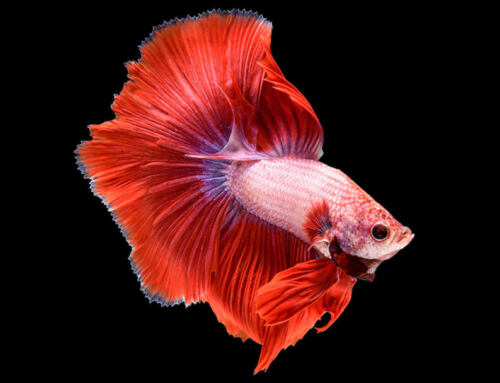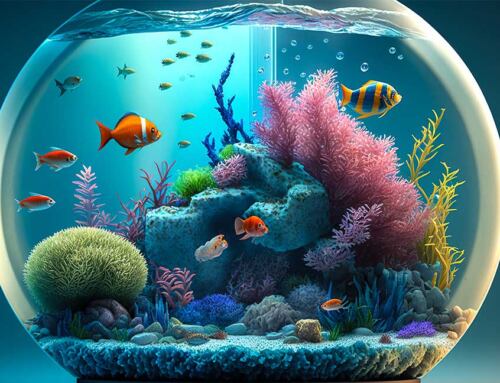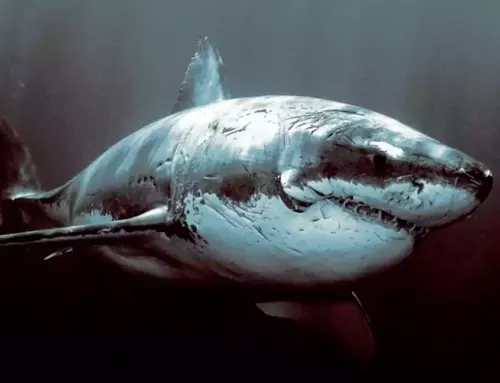Thirty distinct species of clownfish belong to the Amphiprioninae subfamily and range greatly in size, appearance, and personality. More elaborate patterns and designs and several longfin variants have been introduced to this iconic fish thanks to the saltwater tank hobby.
The following are the most often encountered species:
Maroon clownfish (Amphiprion maroon), pink skunk clownfish (Amphiprion perideraion), and false percula clownfish (Amphiprion ocellaris) are all members of the genus Amphiprion (Premnas biaculeatus). Clownfish are easily distinguished by their bright orange bodies and distinctive three-stripe pattern of white and black. Due to the fact that they are sequential hermaphrodites, these saltwater fish are typically observed in pairs. Fish are born male but have the extraordinary capacity to undergo a metamorphosis into a female when the time is right, at which point the female will grow to a larger size.
The anemone provides protection from predators for the clownfish and food and waste for the anemone. Some clownfish naturally have this mucus present in their skin, while others need to acclimatize themselves to the unique sting of the anemone. It’s not always the case, though, that this mutualism will hold true in an aquarium. It’s true that many aquarium-raised clownfish aren’t necessarily interested in keeping an anemone as a companion. Although this may be discouraging to many first-time aquarium keepers, clownfish are still a fantastic addition to any saltwater tank.
Types of clownfish
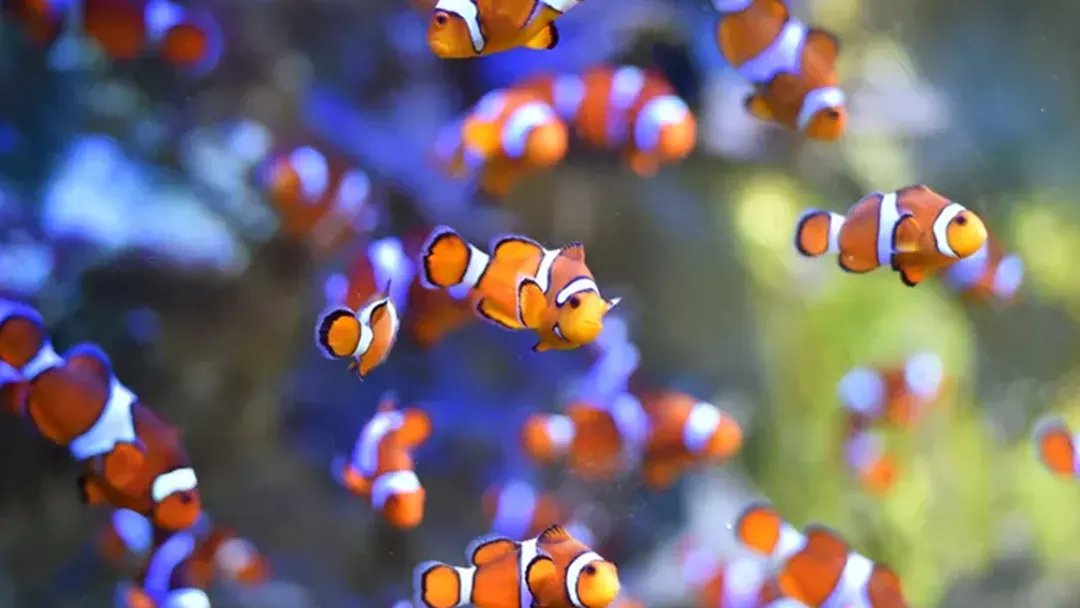
Snowflake
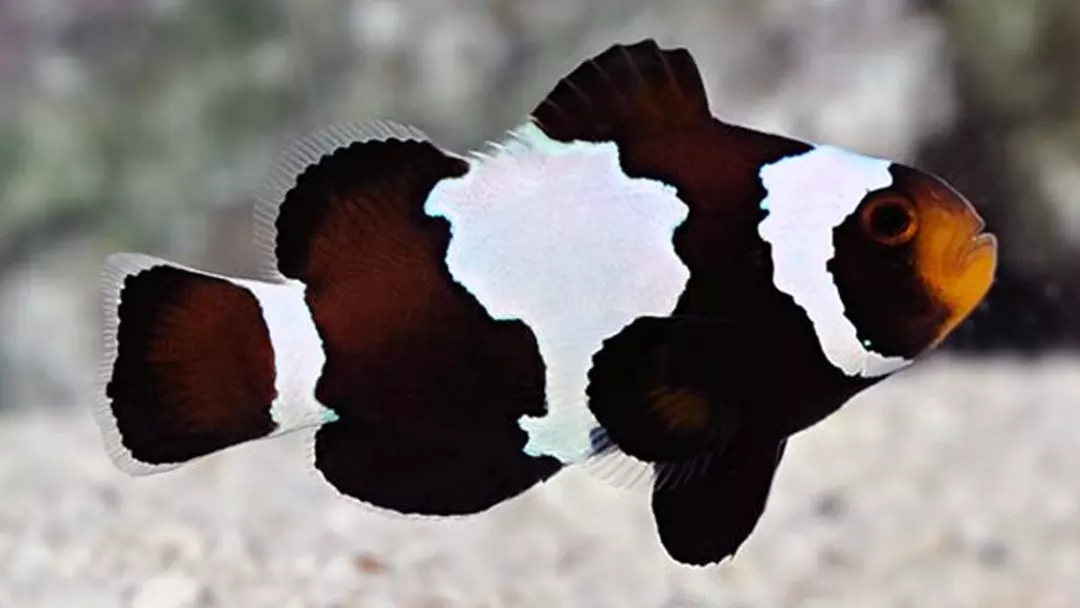
It’s not uncommon to see snowflake clownfish in aquariums. These are the offspring of ocellaris clownfish that have been bred selectively to produce a wide range of quality. Adult snowflake clownfish typically reach a length of four inches. Differences between a snowflake and ocellaris clowns can be seen mostly in the breadth of the white stripes, which can vary greatly between individuals. Because of this variability, snowflake clowns can be divided into three categories: snowflake ocellaris, premium snowflake ocellaris, and super snowflake ocellaris.
Picasso
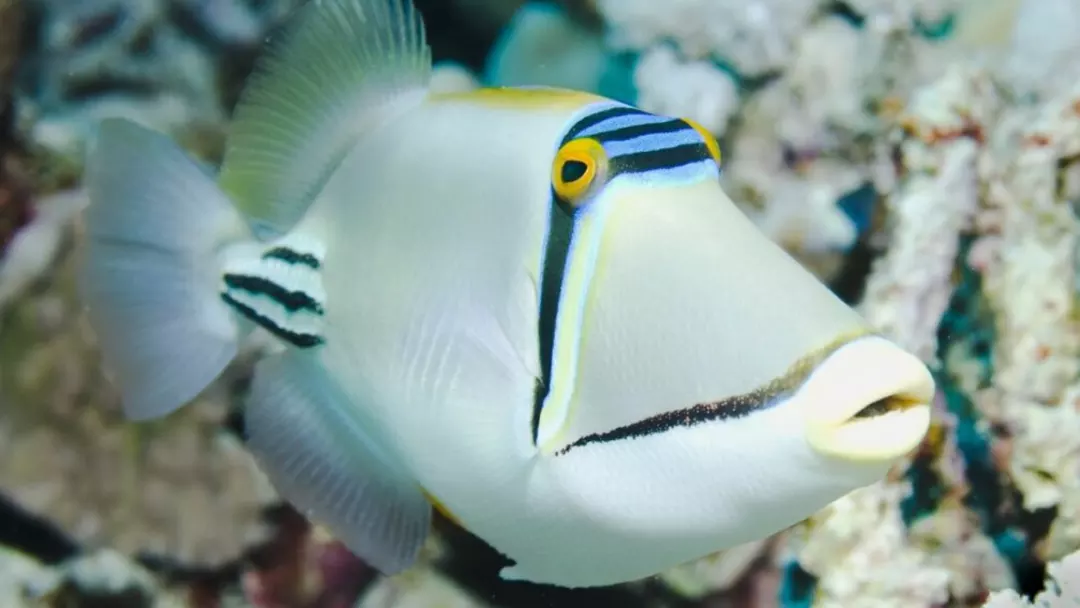
You may also find Picasso clownfish at most pet stores and aquariums. These miniature marine mammals are modeled after the larger Amphiprion percula clownfish. Picasso clownfish, like the snowflake clown, are distinguished by their extended white stripes, which are assigned a numerical value. Their orange base coloration can have additional yellow undertones because they are percula clownfish. Picasso clownfish are available in both standard and high quality.
Frostbite
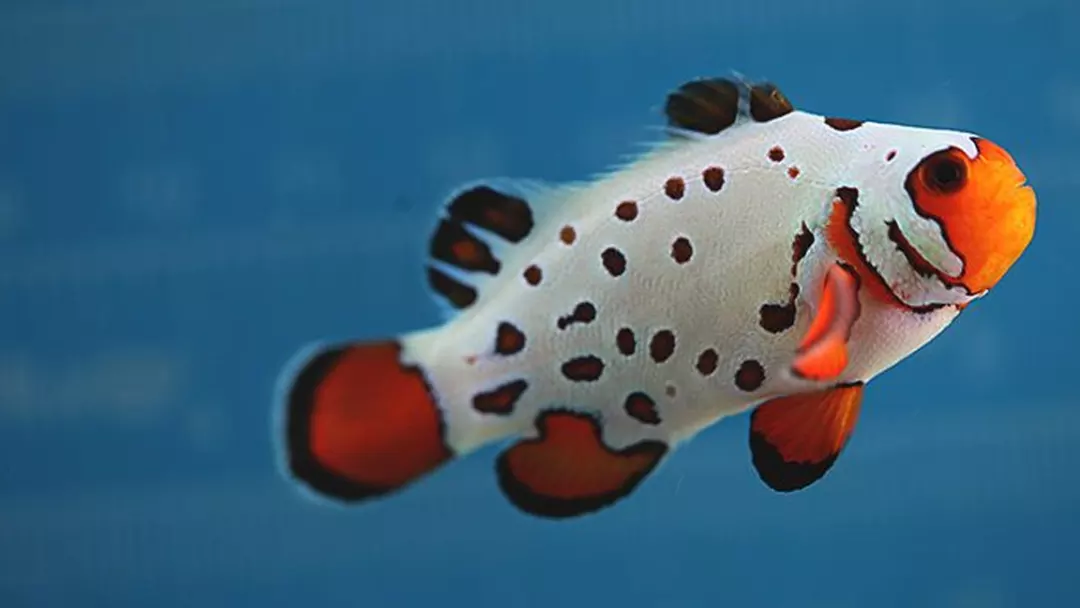
This is where the challenge of telling clownfish species apart begins. The frostbite clownfish, which is a subspecies of the ocellaris clownfish, looks like a snowflake and is named for that very similarity. These marine creatures are a hybrid of the more expensive snowflake clownfish and the less expensive Wyoming white clownfish. Nonetheless, there are a few distinguishing characteristics.
An adult frostbite clownfish can reach a length of 4 inches. Their designer moniker comes from the fact that, save for a few random locations, their bodies are all white. This is meant to evoke frostbite. It’s interesting to see how these fish darken with age; a young frostbite clownfish could have a lot of orange, but as it matures, its spots will get deeper and darker, eventually becoming black.
White Wyoming
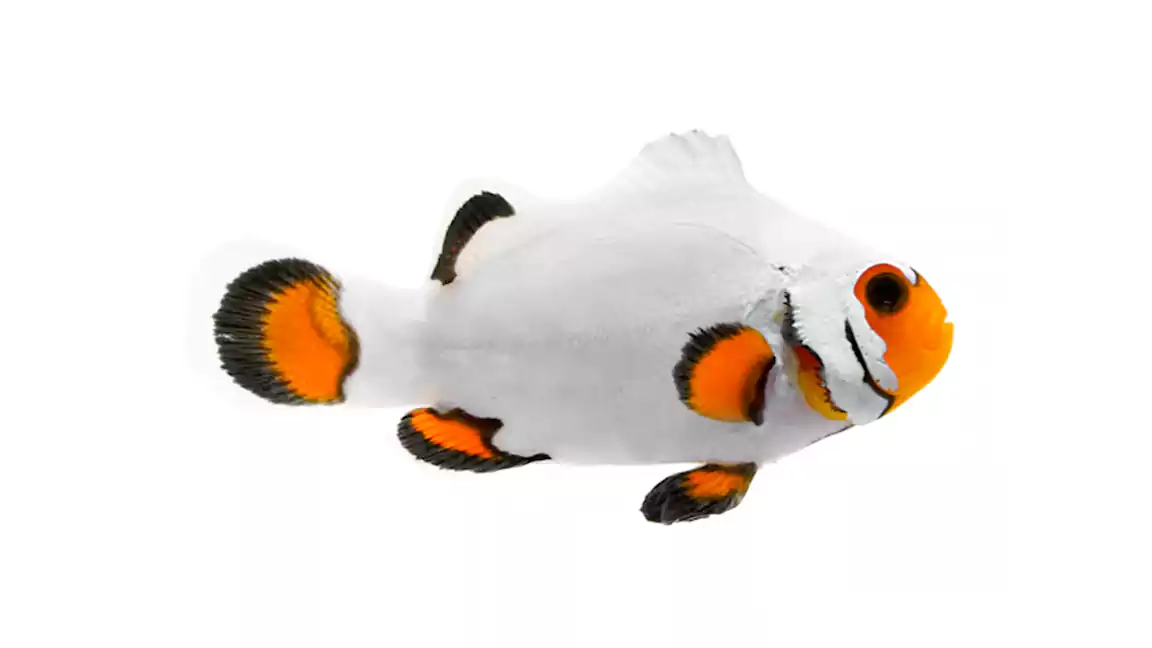
These fish look a lot like the Maine blizzard clownfish. However, ocellaris clownfish were used to create the Wyoming white clownfish, while percula clownfish were used to create the Maine blizzard clownfish. The number of spines on their dorsal fin and the colour of their eyes are the most obvious differences. White clownfish from Wyoming typically reach a maximum size of 4 inches. In contrast to their otherwise virtually white appearance, these fish are easily distinguished by a little black patch located directly above their gills. As the fish ages, the orange spots will become black. Very recently have commercial breeding efforts begun on these fish due to their scarcity. Once more, their requirements are the same as for the common ocellaris clown.
Phantom
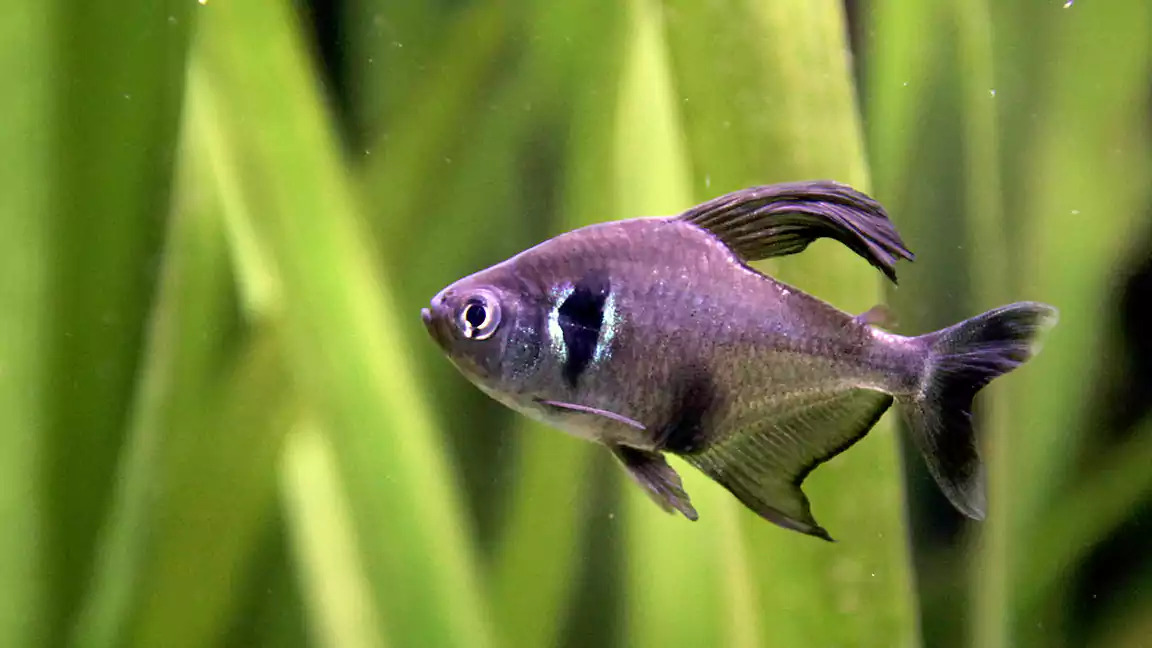
While still an ocellaris species, the phantom clownfish is the first black clownfish to make the cut. These fish reach a maximum size of 4 inches when mature. These tiny critters are a blend of premium snowflake ocellaris clownfish, black ice clownfish, and super black Darwin ocellaris clownfish. This creates a smooth black background with angular white streaks. Moreover, a longfin type of phantom clownfish has been produced. Yet, their phantom colors do not fade and their fins are more rounded and have a wider margin than those of other longfin clownfish.
Domino
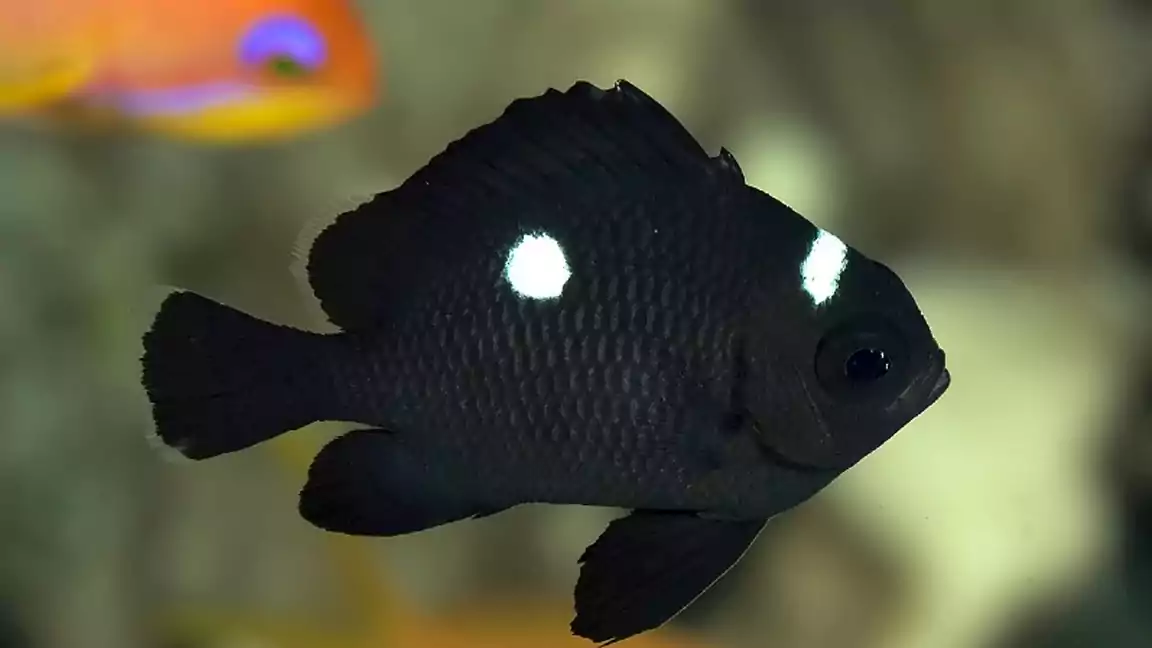
The domino clownfish gets its name from the contrasting white spot on its gills and black body; occasionally, this spot will be extended into a misbar around the head, giving the fish an even more distinctive appearance. The snout of this fish is brown, and its presence and intensity of brownness can vary widely. These clownfish, which descend from the smaller black ocellaris species, can reach a length of 3 inches. They are brown when young, but age turns them completely black.
The domino clownfish is also available in longfin variations. These fish, on the other hand, are substantially less dark and retain the brown coloring typical of juveniles. It’s also common for them to have peculiar white markings beyond the gill dot. That’s mis bars all the way around the noggin and right down the centre. The domino clownfish is an easy pet because it is a type of ocellaris clown that requires standard aquarium maintenance.
Characteristics & Appearance
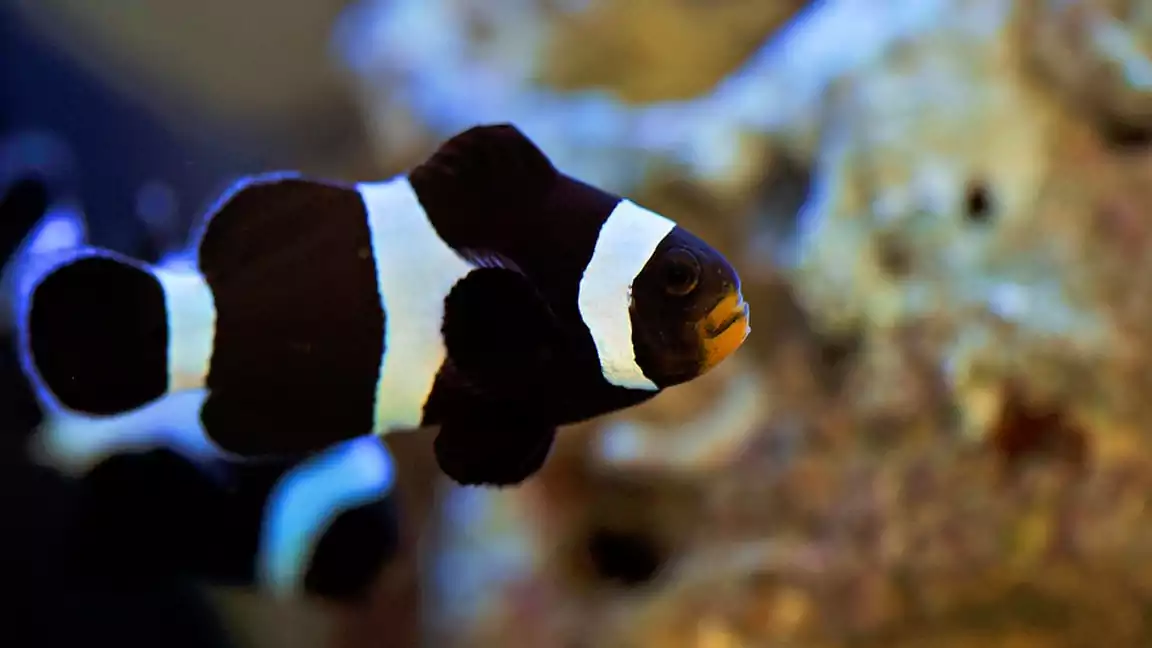
Its distinctive orange color and white stripes make them simple to spot. Clownfishes can get up to 10 centimeters in length, with females growing to be more impressively sized than their male counterparts.
Specifications: Size and Mass
Their bodies are typically around 4 inches in length but can be as short as 3 inches.
Aspects of Appearance, including Color and Appearance
Three white bands span the majority of a clownfish’s head and body. The white stripes are bordered in black. Clownfish live in coral reefs in the western Pacific, the Red Sea, and the Indian Ocean. They are also common in the oceans to the south of Japan, and off the coasts of Australia and Southeast Asia. None can be found in the Atlantic, Mediterranean, or Caribbean.
Clownfish and sea anemone
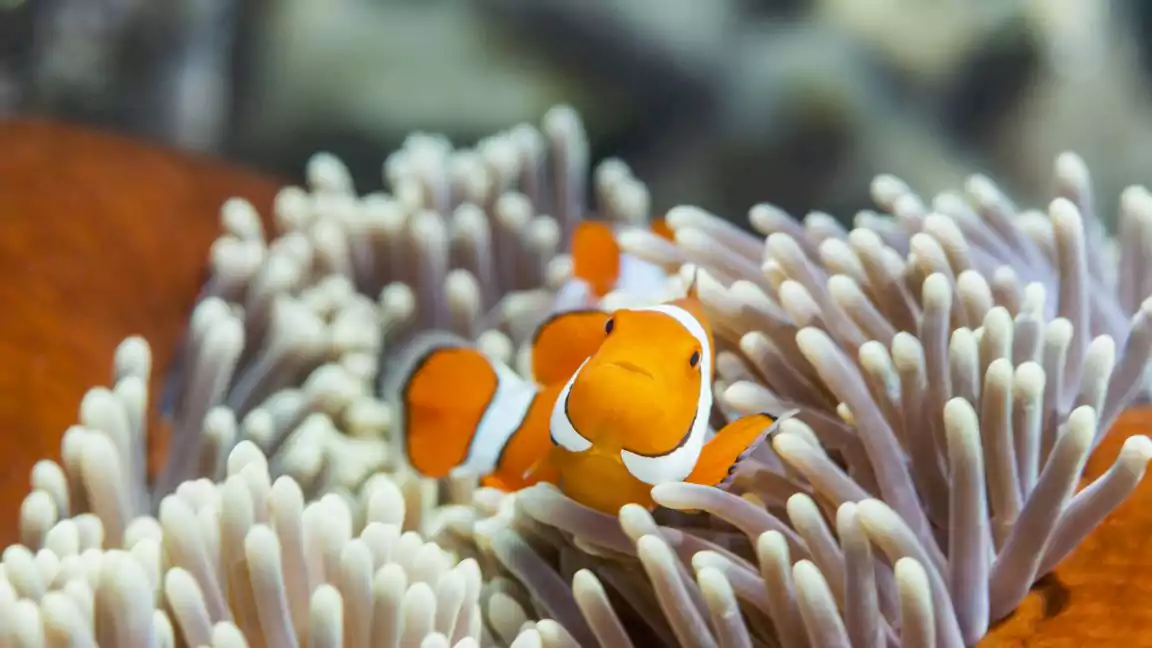
Sea anemones and clownfish have a mutually beneficial interaction that is both interesting and unusual. Clownfish can safely inhabit the sea anemone’s stinging tentacles, and the anemone in turn shields the clownfish from danger. Clownfish are protected from sea anemone stings by a mucus covering on their skin. The sea anemone’s tentacles catch prey, and the clownfish eats what’s left over. The sea anemone provides shelter to the clownfish, and in exchange, the clownfish keeps the anemone clean by eating any algae or other waste that may accumulate on its surface.
Additionally, the clownfish presence often draws other fish to the sea anemone, where they, too, can take refuge from predators within the anemone’s tentacles. To put it simply, both species gain from their affiliation with one another in this case.
Clownfish and anemone relationship
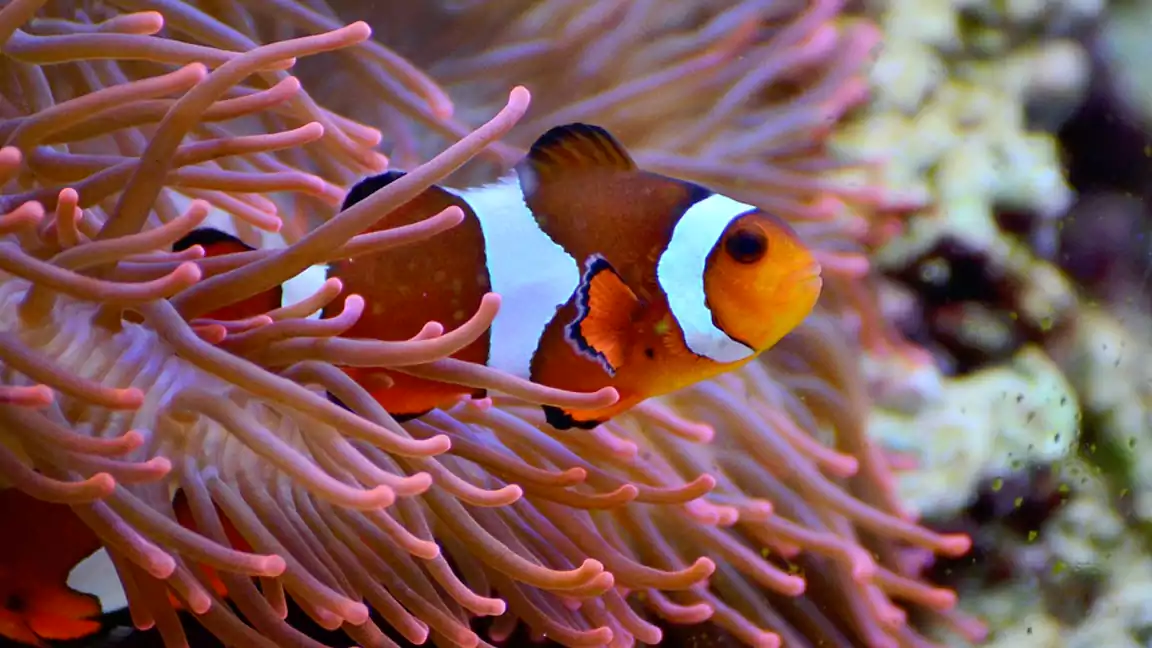
A symbiotic relationship between clownfish and sea anemones results in mutually beneficial relationships for both organisms. Clownfish can safely inhabit the anemone’s stinging tentacles. They are protected from the anemone’s sting by a covering of mucus on their skin. In exchange, the anemone is fed by the clownfish, who bring in scraps of food and plankton that they find on their journeys. Constantly swimming around the anemone, like clownfish do, enhances the water flow and brings in fresh oxygen. Clownfish and their anemone hosts have such a deep bond that the fish rarely leave the anemone’s protection.
They lay their eggs on the anemone’s tentacles and use the anemone’s nutrient-rich fluids as a nursery for their offspring, all while being protected from predators. The anemone also benefits from the clownfish presence since the fish scares away predatory fish that feed on polyps. Together, the partnership between the clownfish and the anemone is an intriguing case study in the ways in which different species can cooperate for their mutual benefit.
Threats and Predators
Clownfish, like many other marine species, face a number of challenges to their continued existence. Threats from humans pose a serious threat to clownfish populations. Because of the rise of social media platforms, this species has gained widespread attention in recent years, which has had negative consequences.
Fun Facts about Clownfish
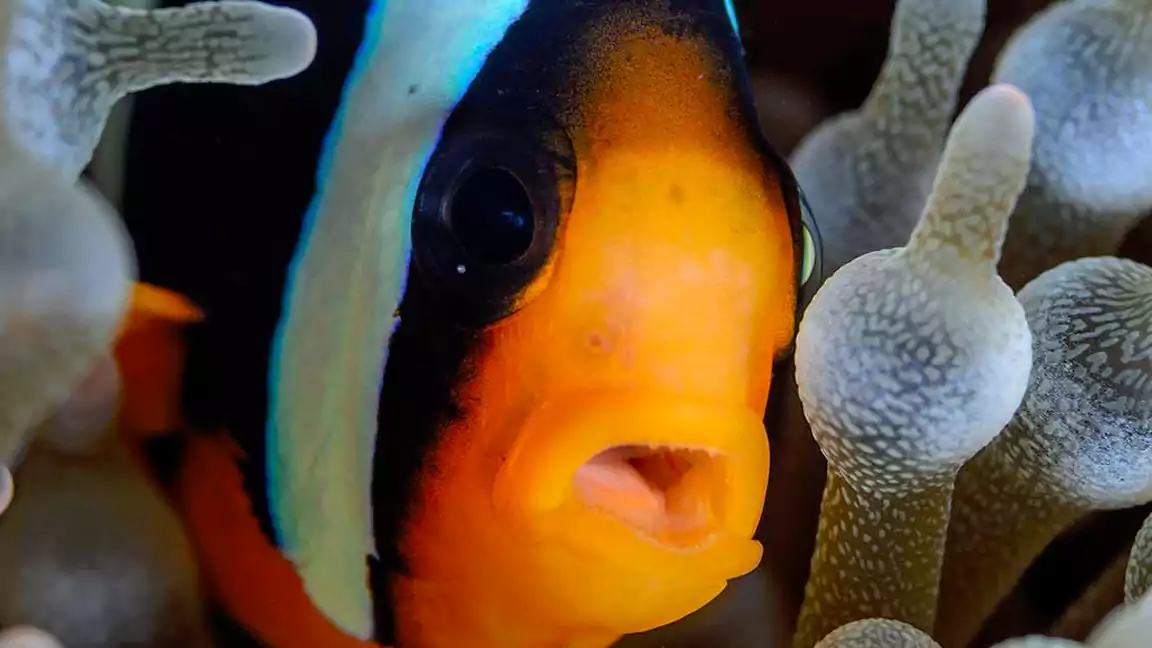
Despite the fact that all clownfish begin life as males, one will develop into the alpha female of his or her group. Despite their reputation for bright colors, clownfish can sometimes be spotted in a striking black and white pattern. They’re the polar opposite of the orange variety. Female clownfish can lay up to a thousand eggs at once. The male clownfish is a loyal companion and a nurturing parent. They clean the nest and watch the eggs until they hatch, yet despite being marine creatures, they’re not great swimmers. Even when they do venture out from their anemones, their swimming is wild and unpredictable. Clownfish communicate with one another by making popping and clicking noises. Although most animal kingdoms place males at the pinnacle of their societies, clownfish instead place their most aggressive females in charge.
Tank Requirements
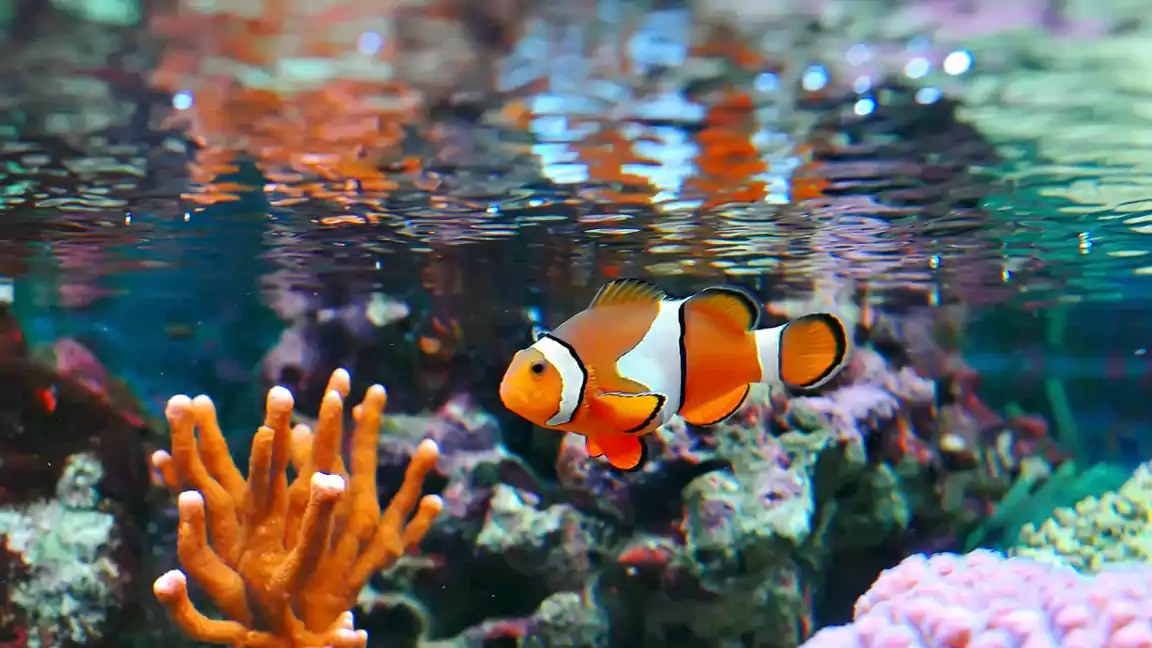
Clownfish are known for their resilience and ability to thrive in a wide range of environments. Fish only (FO), fish only with live rock (FOWLR), and full reef systems are all viable options for housing these creatures. Although though they can survive on their own, most enthusiasts choose to keep them in pairs. As first-time saltwater pets, they’re hard to beat. A 10 gallon tank is adequate for a pair, but a 20 gallon tank will provide extra swimming space and room for more tank mates. Clownfish mark their territory and rarely leave it.
Even if the pair is wild-caught, there is no guarantee that it will accept a new anemone. Yet, you can run with a couple that doesn’t care about the anemone and instead hosts a powerhead. Clownfish have been observed sleeping in some quite unnatural poses. Although it may be uncomfortable to observe your marine fish swimming perpendicular to the glass at first, this is normal behavior for clownfish and should not be cause for alarm.
How Long Can They Live?
As clownfish have the potential for a long life span, it’s crucial that the species you select is well-suited to your reef environment. Clownfish can survive for up to five years in an aquarium. In optimal conditions, though, their lifespan can approach a decade. They are incredibly resilient, surviving even the most severe tank collisions and transfers (but we still advise caution).
Where Do Clownfish Live?
Clownfish do a complicated dance with an anemone before settling in, gently caressing its tentacles with different parts of its body. A layer of mucus on the clownfish and anemone relationship epidermis neutralizes the sting of the fish-eating anemone. In return for its host’s defense against predators and access to leftover food, the clownfish drives away parasites and other invaders.
What does a clownfish eat?
Though they may look cute, clownfish eat both meat and vegetation. They have been observed eating a variety of organisms, including crustaceans, algae, zooplankton, and worms.

